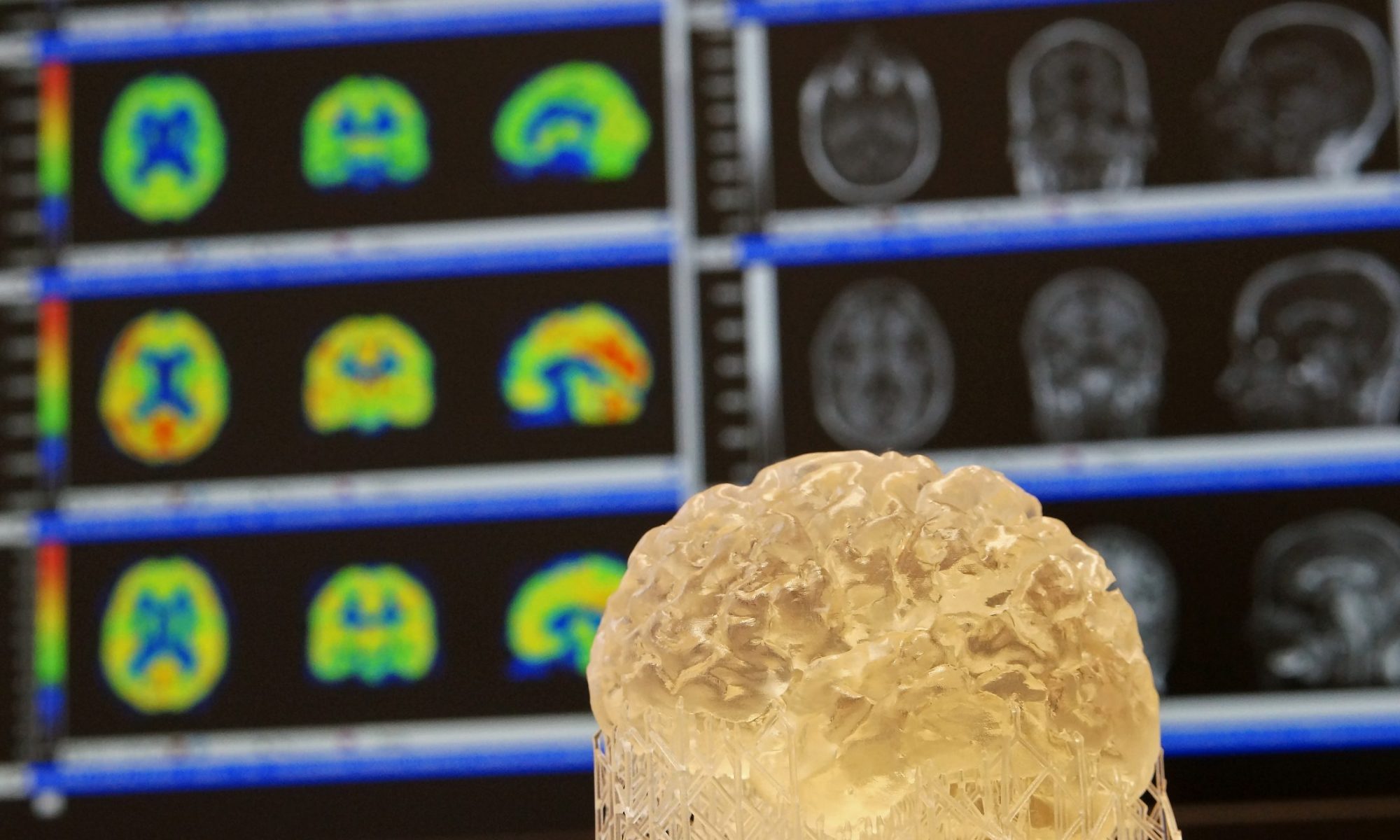2024
Dzialas, Verena; Hoenig, Merle C.; Prange, Stéphane; Bischof, Gérard N.; and Alexander Drzezga,; van Eimeren, Thilo
Structural underpinnings and long-term effects of resilience in Parkinson’s disease Journal Article
In: npj Parkinsons Dis., vol. 10, no. 1, 2024, ISSN: 2373-8057.
Abstract | Links | BibTeX | Tags: DaT imaging, Parkinson, Resilience
@article{Dzialas2024b,
title = {Structural underpinnings and long-term effects of resilience in Parkinson’s disease},
author = {Verena Dzialas and Merle C. Hoenig and Stéphane Prange and Gérard N. Bischof and and Alexander Drzezga and Thilo van Eimeren},
doi = {10.1038/s41531-024-00699-x},
issn = {2373-8057},
year = {2024},
date = {2024-12-00},
urldate = {2024-12-00},
journal = {npj Parkinsons Dis.},
volume = {10},
number = {1},
publisher = {Springer Science and Business Media LLC},
abstract = {<jats:title>Abstract</jats:title><jats:p>Resilience in neuroscience generally refers to an individual’s capacity to counteract the adverse effects of a neuropathological condition. While resilience mechanisms in Alzheimer’s disease are well-investigated, knowledge regarding its quantification, neurobiological underpinnings, network adaptations, and long-term effects in Parkinson’s disease is limited. Our study involved 151 Parkinson’s patients from the Parkinson’s Progression Marker Initiative Database with available Magnetic Resonance Imaging, Dopamine Transporter Single-Photon Emission Computed Tomography scans, and clinical information. We used an improved prediction model linking neuropathology to symptom severity to estimate individual resilience levels. Higher resilience levels were associated with a more active lifestyle, increased grey matter volume in motor-associated regions, a distinct structural connectivity network and maintenance of relative motor functioning for up to a decade. Overall, the results indicate that relative maintenance of motor function in Parkinson’s patients may be associated with greater neuronal substrate, allowing higher tolerance against neurodegenerative processes through dynamic network restructuring.</jats:p>},
keywords = {DaT imaging, Parkinson, Resilience},
pubstate = {published},
tppubtype = {article}
}
<jats:title>Abstract</jats:title><jats:p>Resilience in neuroscience generally refers to an individual’s capacity to counteract the adverse effects of a neuropathological condition. While resilience mechanisms in Alzheimer’s disease are well-investigated, knowledge regarding its quantification, neurobiological underpinnings, network adaptations, and long-term effects in Parkinson’s disease is limited. Our study involved 151 Parkinson’s patients from the Parkinson’s Progression Marker Initiative Database with available Magnetic Resonance Imaging, Dopamine Transporter Single-Photon Emission Computed Tomography scans, and clinical information. We used an improved prediction model linking neuropathology to symptom severity to estimate individual resilience levels. Higher resilience levels were associated with a more active lifestyle, increased grey matter volume in motor-associated regions, a distinct structural connectivity network and maintenance of relative motor functioning for up to a decade. Overall, the results indicate that relative maintenance of motor function in Parkinson’s patients may be associated with greater neuronal substrate, allowing higher tolerance against neurodegenerative processes through dynamic network restructuring.</jats:p>
2023
Hoenig, Merle C.; Drzezga, Alexander
Clear‐headed into old age: Resilience and resistance against brain aging—A <scp>PET</scp> imaging perspective Journal Article
In: Journal of Neurochemistry, vol. 164, no. 3, pp. 325–345, 2023, ISSN: 1471-4159.
Abstract | Links | BibTeX | Tags: Brain age, Resilience, Resistance
@article{Hoenig2022b,
title = {Clear‐headed into old age: Resilience and resistance against brain aging—A <scp>PET</scp> imaging perspective},
author = {Merle C. Hoenig and Alexander Drzezga},
doi = {10.1111/jnc.15598},
issn = {1471-4159},
year = {2023},
date = {2023-02-00},
urldate = {2023-02-00},
journal = {Journal of Neurochemistry},
volume = {164},
number = {3},
pages = {325--345},
publisher = {Wiley},
abstract = {<jats:title>Abstract</jats:title><jats:p>With the advances in modern medicine and the adaptation towards healthier lifestyles, the average life expectancy has doubled since the 1930s, with individuals born in the millennium years now carrying an estimated life expectancy of around 100 years. And even though many individuals around the globe manage to age successfully, the prevalence of aging‐associated neurodegenerative diseases such as sporadic Alzheimer’s disease has never been as high as nowadays. The prevalence of Alzheimer’s disease is anticipated to triple by 2050, increasing the societal and economic burden tremendously. Despite all efforts, there is still no available treatment defeating the accelerated aging process as seen in this disease. Yet, given the advances in neuroimaging techniques that are discussed in the current Review article, such as in positron emission tomography (PET) or magnetic resonance imaging (MRI), pivotal insights into the heterogenous effects of aging‐associated processes and the contribution of distinct lifestyle and risk factors already have and are still being gathered. In particular, the concepts of resilience (i.e. coping with brain pathology) and resistance (i.e. avoiding brain pathology) have more recently been discussed as they relate to mechanisms that are associated with the prolongation and/or even stop of the progressive brain aging process. Better understanding of the underlying mechanisms of resilience and resistance may one day, hopefully, support the identification of defeating mechanism against accelerating aging.},
keywords = {Brain age, Resilience, Resistance},
pubstate = {published},
tppubtype = {article}
}
<jats:title>Abstract</jats:title><jats:p>With the advances in modern medicine and the adaptation towards healthier lifestyles, the average life expectancy has doubled since the 1930s, with individuals born in the millennium years now carrying an estimated life expectancy of around 100 years. And even though many individuals around the globe manage to age successfully, the prevalence of aging‐associated neurodegenerative diseases such as sporadic Alzheimer’s disease has never been as high as nowadays. The prevalence of Alzheimer’s disease is anticipated to triple by 2050, increasing the societal and economic burden tremendously. Despite all efforts, there is still no available treatment defeating the accelerated aging process as seen in this disease. Yet, given the advances in neuroimaging techniques that are discussed in the current Review article, such as in positron emission tomography (PET) or magnetic resonance imaging (MRI), pivotal insights into the heterogenous effects of aging‐associated processes and the contribution of distinct lifestyle and risk factors already have and are still being gathered. In particular, the concepts of resilience (i.e. coping with brain pathology) and resistance (i.e. avoiding brain pathology) have more recently been discussed as they relate to mechanisms that are associated with the prolongation and/or even stop of the progressive brain aging process. Better understanding of the underlying mechanisms of resilience and resistance may one day, hopefully, support the identification of defeating mechanism against accelerating aging.
